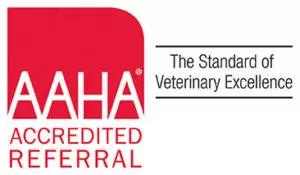A Lesson in Chinese Veterinary Medicine Terminology
Traditional Chinese Veterinary Medicine (TCVM) uses various therapies, such as acupuncture, diet, herbal therapy, and massage, to restore balance and harmony to a pet’s body and treat and prevent disease. TCVM is an adaptation and extension of Traditional Chinese Medicine (TCM), which is based on the concept that the body is a microcosm of the surrounding universe. This means that the natural laws and forces that govern the world also influence the body’s internal environment. This blog will help you understand some key Chinese Medicine terms and shed light on their meanings and significance.
Vital energy
At the heart of TCVM lies the concept of Qi—pronounced Chi—an invisible energy force that is in constant motion in a healthy body, nourishing organs and tissues and maintaining overall health. If the Qi is weakened or blocked, illness results. Understanding Qi is fundamental to diagnosing and treating body imbalances.
Qi flows through the body via meridians, which are pathways that connect various body parts. Twelve main meridians correspond to a specific organ system, and eight extraordinary meridians regulate the flow of Qi throughout the body.
Stagnation occurs when blood and Qi aren’t moving freely through the meridians, creating energy blocks that lead to pain and disease.
Five elements
The five elements, which are aspects of Qi, include:
- Earth meridians — Earth meridians are associated with the stomach and spleen. A weak Earth Qi leads to pensiveness.
- Fire meridians — Fire meridians are associated with the heart and small intestines. A weak Fire Qi can lead to anxiety, restlessness, and insomnia.
- Metal meridians — Metal meridians are associated with the lungs and large intestine. A Metal Qi imbalance can lead to grief and sadness.
- Water meridians — Water meridians are associated with the kidneys and bladder. A weak Water Qi can lead to problems with water metabolism, urination, and fertility.
- Wood meridians — Wood meridians are associated with the liver and gallbladder. A weak Wood Qi can lead to indecisiveness.
Pattern diagnosis
Pattern diagnosis is an essential TCVM component that refers to customizing a patient’s treatment based on clinical information gathered according to the following principles:
- Yin-Yang theory — According to Chinese theory, Yin and Yang are two forces in the universe. Yin is negative, dark, and feminine, while Yang is positive, bright, and masculine. A cold, deficient, and interior pattern is considered Yin, while a hot, excessive, and exterior pattern is considered Yang. Most disharmony patterns have elements of both.
- Five elements theory — The interactions and relationships between the five elements help develop a pattern diagnosis. These elements are constantly moving and changing with enhancement and inhibition on each side.
- Five fundamental substances — The five fundamental substances are Qi, Xue (blood), Jinge (body fluids), Jing (essence), and Shen (spirit).
- Six common pathogens — The conditions that cause illness include wind, cold, dampness, dryness, fire, and heat.
Excess and deficiency
Four pathological Yin-Yang imbalances can occur, including:
- Yang excess — When Yang energy isn’t regulated by the body’s cooling power, clinical signs typically include high fever, red or purple tongue, and strong pulse.
- Yin excess — When the body’s cooling power overwhelms the warming energy, clinical signs include pain, swelling, edema (i.e., a painless swelling beneath the skin surface caused by fluid retention), loose stool, pale or purple tongue, and slow pulse.
- Yang deficiency — If the body’s warming power can’t equalize the cooling energy, potential clinical signs include cold extremities, edema, loose stool, chronic back pain, incontinence, fertility disorders, pale tongue, rear limb weakness, and weak pulse.
- Yin deficiency — If the body’s cooling power isn’t equalized by the warming energy, clinical signs may include generalized weakness, thirst, restlessness, anxiety, red or dry tongue, and thready or fast pulse.
Traditional Chinese Veterinary Medicine treatments
TCVM treatment uses a holistic approach that addresses the mind, body, and spirits, as well as social factors. Treatment modalities to tonify (i.e., strengthen or nourish) the body’s energy include acupuncture, herbal medicine, food therapy, and tui-na.
Acupuncture uses needles at certain pressure points in the body that correspond to meridians to rebalance or unblock the body’s energy flow. Acupressure works on the same basic principle as acupuncture, but uses pressure and massage instead of needles.
Herbal medicine uses particular herbal ingredients in individualized combinations and formulas, depending on the patient’s disease pattern. The ingredients can be in powder, tea, pill, or capsule form.
Food therapy uses diet to treat and prevent body imbalances by tailoring the patient’s diet based on their diagnosis and the food’s energetics.
Tui-na is Chinese medical massage that manipulates acupoints and meridians to promote Qi circulation and correct organ system imbalances.
While TCVM can benefit pets with physical and emotional ailments, it can also help healthy pets maintain their state of balance and well-being. If you think TCVM could benefit your pet, schedule an appointment for your four-legged friend with the Integrative Medicine Department at Long Island Veterinary Specialists. We can be reached at 516-501-1700.


